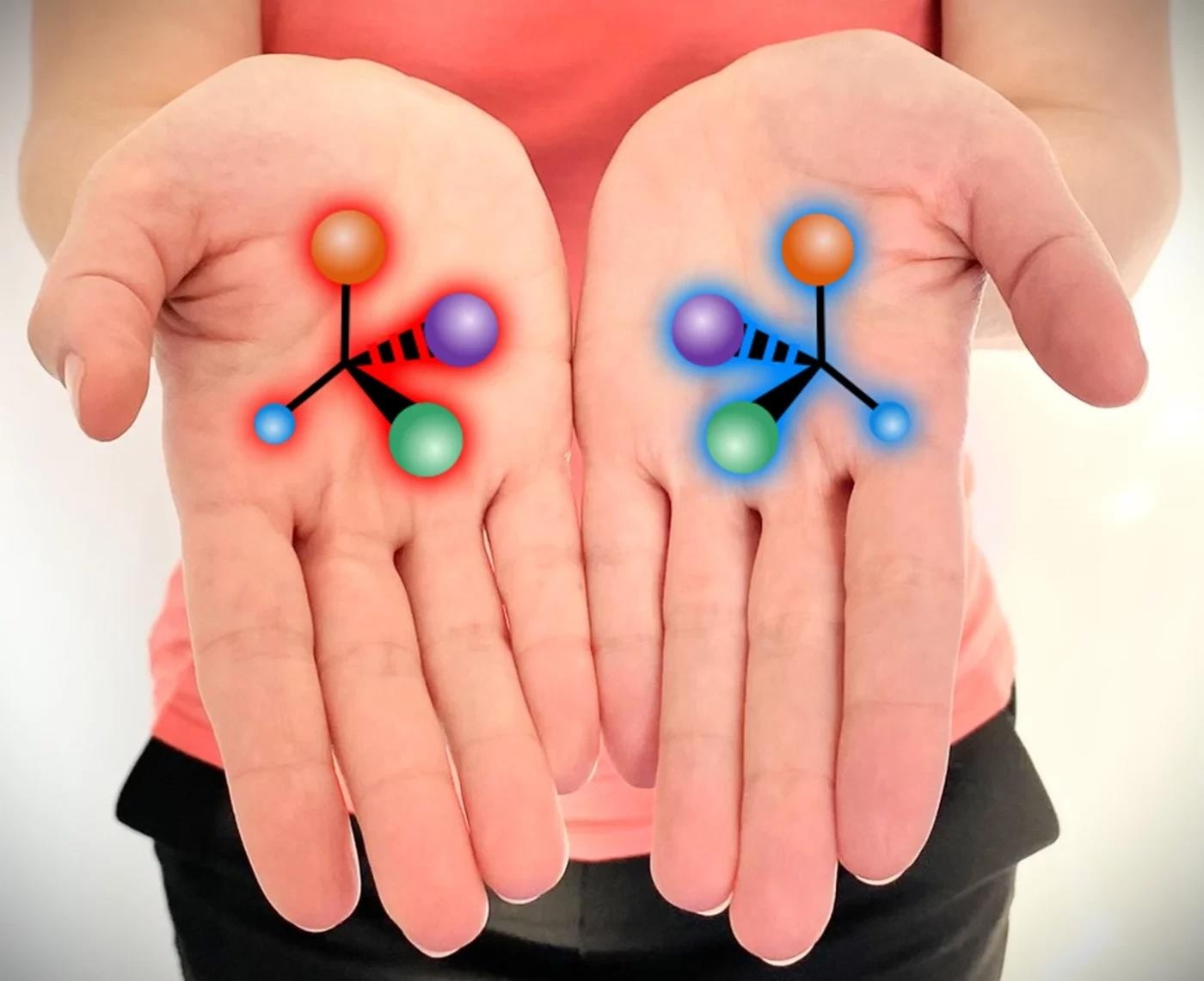The ability to differentiate between two chiral enantiomers is important for chemical industries such as pharmaceutical companies, flavor/odor engineering, and forensic science. A new wave of chiral optical methods has demonstrated significant improvements in chiral sensitivity over their predecessors, potentially leading to analytical advantages for chiral discrimination.

Chirality is defined as a pair of molecules, called enantiomers, which are non-superimposable mirror images of one another. Although these molecules look similar, they can have drastically different behavior in nature. Image Credit: © FHI
Scientists at the Fritz Haber Institute have combined one of these modern techniques with the study of gas-phase anions, allowing mass selection and the use of a simple tabletop laser for chiral effect observation. As a result, researchers are one step closer to developing a reliable analytical tool capable of chiral discrimination in dilute and complex chiral mixtures.
From the flavor differences between spearmint and fennel to the effects of a drug that either heals morning sickness or induces birth deformities, chirality and the properties of enantiomers that cause these differences are known to be important aspects of biological processes.
Despite their distinct biological behavior, enantiomers with similar chemical structures are difficult to distinguish using analytical or spectroscopic methods. Much effort has been put into developing chiral discrimination techniques capable of matching nature’s ability to distinguish between increasingly small samples of two enantiomers.
A new wave of chiral discrimination techniques has surfaced over the last two decades, with chiral sensitivities that are orders of magnitude higher than their predecessors. This high sensitivity enables the study of isolated chiral molecules in the gas phase at very low initial sample concentrations.
Photoelectron circular dichroism (PECD) spectroscopy is one of these modern techniques that provide substantial analytical promise. PECD is a chiral optical effect that occurs in the photoemission of electrons from a sample of chiral molecules when chiral light (i.e., circularly polarized light) illuminates it.
The result is a shift in the average direction that the electrons leave the molecular sample (either in the forward or backward direction). This direction is determined by the light’s handedness and the enantiomer being probed. This effect is extremely sensitive to many characteristics of a chiral molecule, resulting in an impact that is exceptionally perceptive to a molecule’s chiral potential.
Even though most studies of PECD have been conducted on neutral molecules, investigators at the Fritz Haber Institute have investigated this effect in anions. The use of anions for PECD spectroscopy has several significant analytical benefits: First, because anions are charged particles, ion optics can be used to select mass. Industrial chiral samples are frequently multi-component.
The addition of mass selective capabilities would allow target molecules to be isolated prior to the photoemission process, simplifying the final analysis. Furthermore, because this effect is manifested by the expulsion of an electron from a chiral molecule, lower energies for electron detachment are desirable because they permit the use of commercially available tabletop lasers.
To ionize an electron from a closed-shell neutral molecule, either high-energy synchrotron radiation or a multiphoton process using visible or near-UV lasers is required. Single-photon detachment processes enable common tabletop lasers to access the lower photon energies needed for extra electron detachment in anions.
For the first time, the Molecular Physics department’s research team captured an energy-resolved PECD signal for a mass-selected anion. This is not only an important benchmark for this technique’s analytical capabilities, but it also opens the door to comprehending the differences in electron dynamics between the photoionization of neutrals and the photodetachment of anions.
Because the observation of this effect in anions has decelerated two decades behind that of its neutral counterpart, comparisons of these photoemission processes could lead to a better understanding of the universal dynamics governing the PECD effect.
When evaluating conventional theoretical descriptions of electron photodetachment, the research team discovered a PECD effect that is remarkably similar in magnitude to its neutral counterpart and an impact that endures at much higher electron kinetic energies than expected. These findings highlight a current knowledge gap in this effect, necessitating further research.
Journal Reference
Triptow, J., et al. (2022) Imaging Photoelectron Circular Dichroism in the Detachment of Mass-Selected Chiral Anions. Angewandte Chemie International Edition. doi.org/10.1002/anie.202212020.